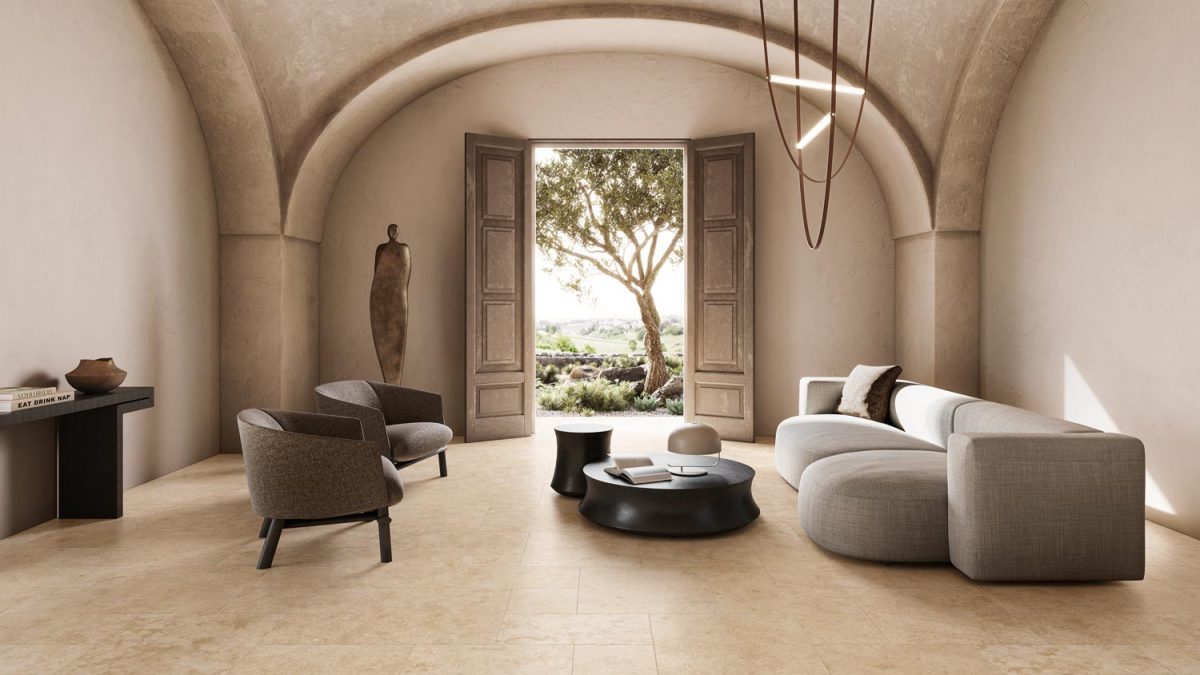
How to choose tiles for a living room? What are the standards for living room tiling?
The living room, a room of great elegance, is the heart of the house. It is therefore important to choose the right covering, whether wall or floor. It must be able to withstand shocks and numerous movements, be simple to maintain and visually attractive.
Indoor tiling presents all of these characteristics to perfection. Here is therefore how to choose the ideal tiles for the living room, as well as the standards to respect during your selection.
Large format tiles
By adjusting the volume and accentuating the feeling of space, large format tiles transform the floors and walls of your living room with unique elegance. In addition, the installation of this tiling is faster.
In view of the intense competition that exists, manufacturers are continually striving to produce larger and larger tiles. Some measure 2 m by 2 m.
This living room tiles is of different types, notably porcelain stoneware, which is a natural material based on clay, known for its great durability and attractive assortment. It is available in a wide range of colors, offers excellent value for money and is easy to maintain.
Cement tiles
A new trend in interior decoration, cement tiles fit into all spaces of the house, especially in the living room, to embellish it with classic patterns. This tile, whose popularity dates back to the early 1900s, has seen considerable growth over the years!
Today, it offers both a vintage and modern ambiance when used as living room tiles. Thanks to its many patterns and colors, from checkerboard to arabesque, it goes well with parquet floors and other types of tiles.
Cement tiles are very durable, making them suitable for high traffic areas like the living room. In terms of design, it can be used to create a visual illusion, for example by placing it in the middle of the room to look like a floor rug.
Wood effect tiles
Here’s a trendy new option for your floor! This living room tiles elegant imitates the appearance of a wooden floor with astonishing precision, without requiring maintenance. Typically made from glazed porcelain stoneware, this covering can copy the appearance of different types of wood, including oak or rare species, and is available in several colors.
For a Scandinavian atmosphere that is always warm, choose lighter tones. Wooden floors are perfect for adding a warm and welcoming touch to your living room. And for those who love the natural appeal of solid wood, wood effect ceramic tiles well simulate the strips of a classic parquet floor.
Tiles for modern living room
The industrial style is a type of interior decoration that is very popular today. It appeals to both those who prefer a modern aesthetic and those who want to integrate a retro atmosphere into their home. This leads to the use of polished concrete in the living room.
When it comes in the form of living room tiles, it is more affordable and its appearance is very convincing, including to the touch. Curious to know the composition of concrete tiles? It’s made from porcelain stoneware, which means you don’t need to use varnish to protect your walls or floor from damage.
For those who appreciate natural elements, tiles imitating natural stone are a great option for a decorative touch. This is particularly the case for marble, granite or slate effect tiles in a dark anthracite gray.
Furthermore, porcelain stoneware tiles can also imitate more original materials such as enameled steel. This durable, low-maintenance tile is versatile and should meet all your design needs.
Natural stones as living room tiles
Do you want to transform your living room into a room with an authentic and refined aesthetic? Natural stone is highly recommended for its durability, attractiveness and ease of maintenance. However, you must consider the finish and characteristics of each stone.
For example, slate is a great option for achieving a rustic or modern look. Its deep shades, ranging from light gray to deep black, considerably improve the atmosphere of the room.
If you are looking for a clean, contemporary style, limestone, available in lighter tones, can be an excellent choice, as it adapts to any environment.
Finally, marble, known for its exceptional durability, offers a more elegant appearance thanks to its distinctive appearance and luxurious feel. Be careful, however, not to overdo it with this material, which can harm the general atmosphere of the living room.
What are the standards for living room tiling?
Tiles follow the same rules as other materials and are subject to various standards. Terms like PEI, UPEC or MOHS may not mean anything to you, but they are very useful. The tiles must be suitable for the place where they are laid.
You wouldn’t use rough, dull tiles near the pool or on a patio, would you? Ratings for these standards include the ability to resist scratches, daily use, impact, chemicals, and slipping.
Based on the results of this test, the tile is judged based on these factors, allowing you to make an informed decision. If you feel overwhelmed by these standards, know that wall tiles are generally not subject to these tests because they do not face the same challenges as flooring.
The UPEC standard
It is specific to the French market and serves as a categorization and evaluation system created by the Centre Scientifique et Technique du Bâtiment (CSTB). Not all tile types meet this standard, which does not mean they lack durability. They simply haven’t been tested.
Nevertheless, this standard provides a sense of security, as it guarantees that the living room tiles has been rigorously tested .
The UPEC standard is based on four key factors, each identified by a letter and a number which indicates the level of quality (ranging from 0 to 4, with higher numbers indicating greater merit).
- U represents wear, indicating the tile’s resistance to deterioration caused by regular use, including abrasion, stains, scratches, alteration of appearance and settlement. Here the tiles are classified U2, U2s, U3s and U4.
- P is the abbreviation for punching, which refers to damage caused by dropping an object on the tiles. This aspect is assessed on a scale from P2 to P4.
- E refers to water, which is how a floor covering reacts to water or humidity in the room. This criterion is measured between E1 and E3.
- Finally comes C, which designates chemical agents and staining products. This factor examines the impact of certain substances on the durability of tiles, in a range from C0 to C2.
So, when choosing your living room tiles for example, it is important to take into account the < b>U and P indices. You should opt for tiles that have excellent wear resistance (U3 or U4) and are robust against punctures (P2) to prevent objects like your keys or phone from accidentally damaging them.




